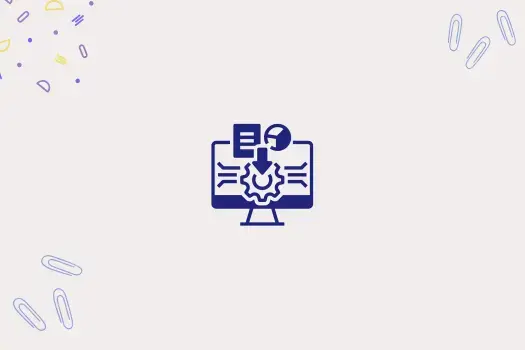
Automate Contract Extraction: Essential Steps & Technology
Content
- What is Contract Extraction?
- Why do businesses need Contract Extraction?
- How do you Automate Contract Extraction?
- Clause Identification
- Risk Mitigation
- Audit Trail
- Conclusion
Companies manage an increasing volume of contracts every day, whether it's vendor agreements, client contracts, employment terms, or partnership deals. Traditionally, reviewing and managing these contracts can overwhelm the legal department, requiring hours of manual effort to read, extract, and analyze critical terms and clauses. It can be slow, leading to missed deadlines or opportunities for renegotiation. Fortunately, contract extraction tools, powered by AI, OCR, and NLP, offer a smarter, faster, and more accurate solution. In this blog, we’ll explore the concept of contract extraction, how it works, and why businesses are turning to this innovative technology to streamline their contract management processes and ensure compliance.
What is Contract Extraction?
Contract extraction refers to the process of automatically identifying, extracting, and organizing key data from contracts. The goal is to convert unstructured contract text into structured, actionable information that can be easily reviewed, analyzed, and stored. This process involves the use of advanced technologies to read and understand the content of contracts without manual intervention.
In simpler terms, contract extraction is like having a smart assistant that reads through lengthy contracts, picks out important details (like dates, terms, clauses, and obligations), and organizes that information in a way that is useful to businesses or legal teams. The process of contract extraction involves several key technologies working together to turn raw contract text into valuable data.

Optical Character Recognition (OCR)
OCR is used to convert scanned or image-based documents (such as PDFs or images of paper contracts) into machine-readable text. It enables businesses to digitize contracts stored in non-editable formats like images or scanned documents. OCR technology scans the document, recognizes the text, and converts it into digital characters that can be processed by AI and NLP tools.
Natural Language Processing (NLP)
NLP is a branch of AI that helps the system understand and interpret human language, including complex legal language found in contracts. It can analyze the text of the contract to understand context, identify key terms (such as parties, dates, obligations, etc.), and determine the meaning behind specific clauses. NLP can break down legal jargon, recognizing synonyms, context, and linguistic patterns to extract relevant information.
Artificial Intelligence (AI)
AI algorithms are trained to recognize patterns and make decisions based on the data extracted from contracts. It can be used to identify specific clauses (like indemnity, termination, and confidentiality), classify contract types (like non-disclosure agreements or vendor contracts), and highlight any potential risks or discrepancies (such as unusual terms or obligations). Over time, AI tools improve their accuracy by learning from large datasets, making them more effective at spotting nuances in contract language.
Why do businesses need Contract Extraction?
Contract review and analysis, when done manually, is prone to human error. Whether it’s missing a crucial clause or misinterpreting the legal language, manual review can lead to costly mistakes. Moreover, legal documents often contain complex terms that can be difficult for non-experts to interpret. Contract extraction technology helps mitigate this risk by automating the process and ensuring that key data is consistently identified and captured without oversight.
Efficiency
Manual contract review can be time-consuming, especially when dealing with large volumes of contracts. Contract extraction tools accelerate this process by automatically scanning, extracting, and organizing data within minutes. This allows businesses to move faster in decision-making and reduces the backlog of contract-related tasks. With automated contract extraction, businesses can integrate contract data directly into their workflows or management systems. It eliminates the need for repetitive, manual data entry, freeing up time for legal teams and increasing overall productivity.
Cost Reduction
Automating the contract extraction process means that fewer resources are required to review contracts manually. It can significantly reduce the need for legal teams or external contractors, lowering overall operational costs. With the speed and accuracy of contract extraction, legal professionals can spend more time on high-value tasks (such as negotiating terms) rather than reviewing every contract in detail. This results in lower legal fees for businesses. By flagging potentially problematic clauses (e.g., ambiguous terms, unbalanced agreements, or non-compliance risks), contract extraction technology helps businesses proactively address legal risks before they escalate. This reduces the risk of disputes or costly litigation.
Improved Decision-Making
Contract extraction allows businesses to easily access and analyze key contract data, which provides insights for better decision-making. For example, knowing exactly when a contract is up for renewal or identifying terms that may be ripe for renegotiation can give businesses a competitive edge. Ongoing contract monitoring becomes easier when key data is automatically extracted and organized. Businesses can set up alerts for important dates, milestones, or obligations, ensuring that they never miss critical deadlines or terms.
How do you Automate Contract Extraction?
Automating contract extraction is essential because it significantly reduces the time and effort required for manual contract review, while also minimizing human error and the risk of overlooking critical terms. OCR scans and converts scanned documents into machine-readable text, while NLP and AI algorithms analyze the text to identify key clauses, dates, payment terms, and obligations. These tools automatically structure the extracted data into usable formats, enabling businesses to quickly retrieve and analyze contract information.
Clause Identification
One of the core features of contract extraction tools is their ability to identify and extract key clauses from contracts automatically. Legal contracts often contain complex and lengthy clauses that outline essential terms and conditions, and it can be difficult and time-consuming to sift through all the text manually. Contract extraction tools can pinpoint specific clauses with remarkable accuracy, including:
Termination Clauses: These terms specify how and when the contract can be ended, including notice periods and conditions for termination.
Indemnification Clauses: Terms that determine the extent to which one party agrees to compensate the other for certain losses or damages.
Payment Terms: Details about payment schedules, amounts, methods, and penalties for late payment.
Confidentiality Clauses: Terms specifying the handling and protection of sensitive information.
Force Majeure: Clauses that cover unforeseen events (like natural disasters) that might impact contract performance.

Risk Management
Contract extraction tools can automatically flag potential legal risks or inconsistencies within contracts. These tools use AI and machine learning to analyze the text and detect risky clauses or terms that may pose a threat to the business. Some examples of risks that can be identified include:
Ambiguous Terms: Vague or unclear clauses that could lead to disputes or misinterpretations.
Unfavorable Terms: Terms that disproportionately favor one party over another, such as unbalanced indemnification or liability clauses.
Non-compliance: Clauses that do not meet regulatory or industry standards, potentially exposing the company to legal or financial penalties.
Deadlines & Missed Obligations: Identification of critical dates (e.g., renewal, payment deadlines) that might be overlooked and result in missed opportunities or financial penalties.

Audit Trail
Transparency and accountability are crucial in any contract management process, especially for businesses subject to regulatory oversight. Contract extraction tools provide an audit trail feature that tracks every change made to a contract or its data. It is essential for businesses that need to demonstrate compliance during audits or litigation. It offers an added layer of security and trust by providing a clear history of contract modifications, making it easier to trace the evolution of a contract and verify that all changes were made under legal and organizational standards. This includes:
Version Control: The ability to track and manage different versions of a contract as it evolves through negotiations or revisions.
Document History: Record of who made changes, when they were made, and what exactly was altered.
Compliance Tracking: Ensures that every change adheres to compliance guidelines, legal requirements, or internal protocols.

Conclusion
As businesses continue to handle increasing volumes of contracts, adopting automated solutions becomes a crucial step in mitigating legal risks, improving decision-making, and driving overall operational productivity. By automating the extraction of key data from contracts, businesses can reduce manual effort, minimize the risk of human error, and ensure compliance with legal and regulatory standards. Dock 365 offers centralized storage and pre-written templates to standardize contract management across the organization. Users can utilize our OpenAI and OCR capabilities to extract, summarize, and compare a huge volume of legal documents in no time. It accelerates the entire contracting process, from drafting to reviews to monitoring. With the help of AI, OCR, and NLP, contract extraction tools can quickly identify and organize essential information, such as clauses, dates, payment terms, and obligations, turning complex and unstructured documents into structured, actionable insights.
Book a Live demo
Schedule a live demo of Dock 365's Contract Management Software instantly.
.png?width=196&height=196&name=MicrosoftTeams-image%20(24).png)
Written by Deepti Gopimohan




